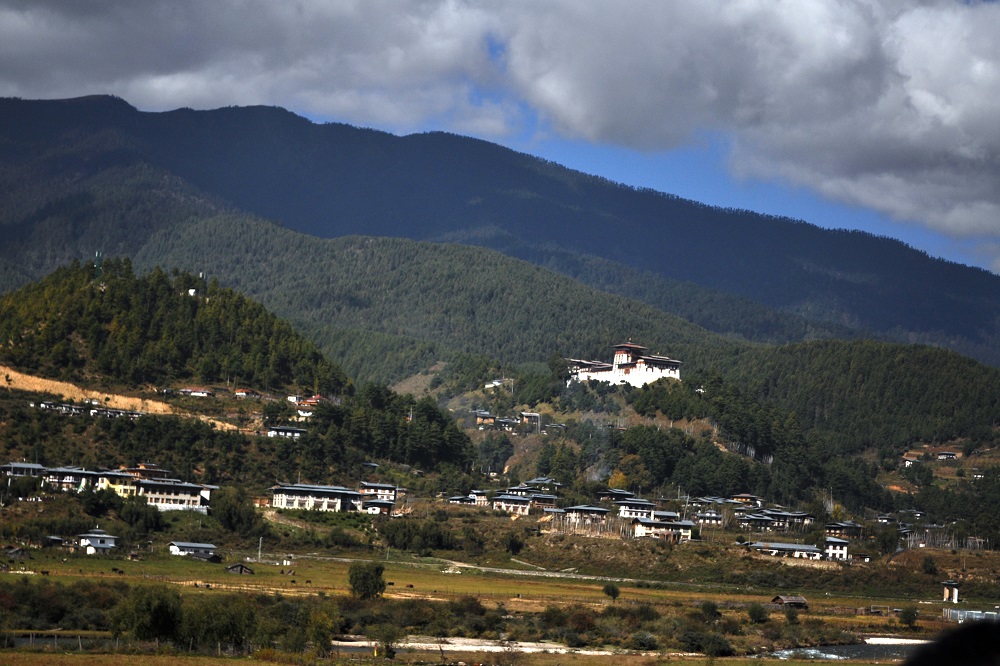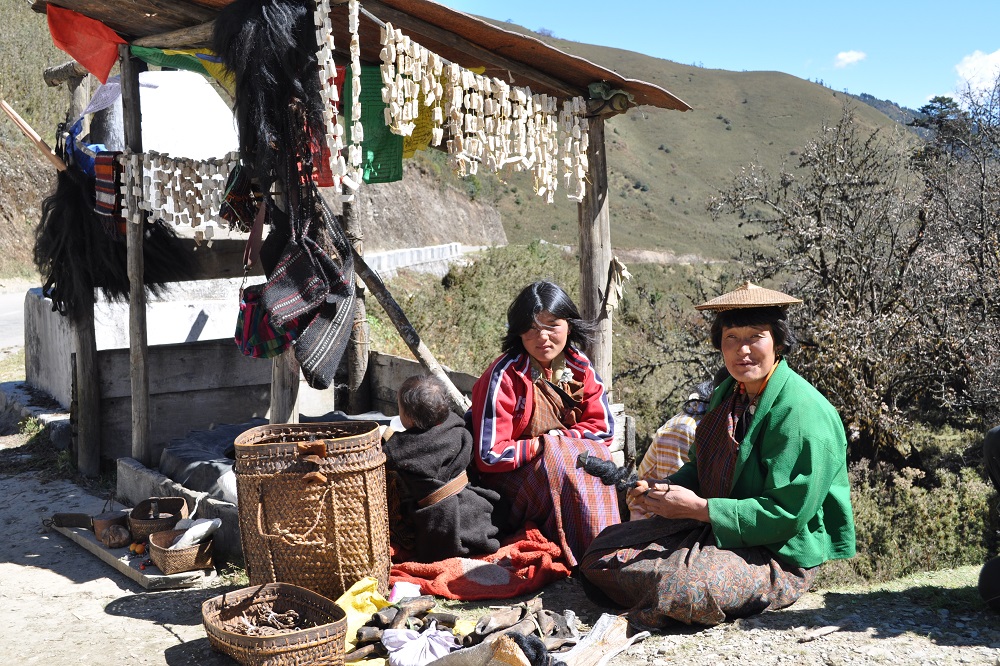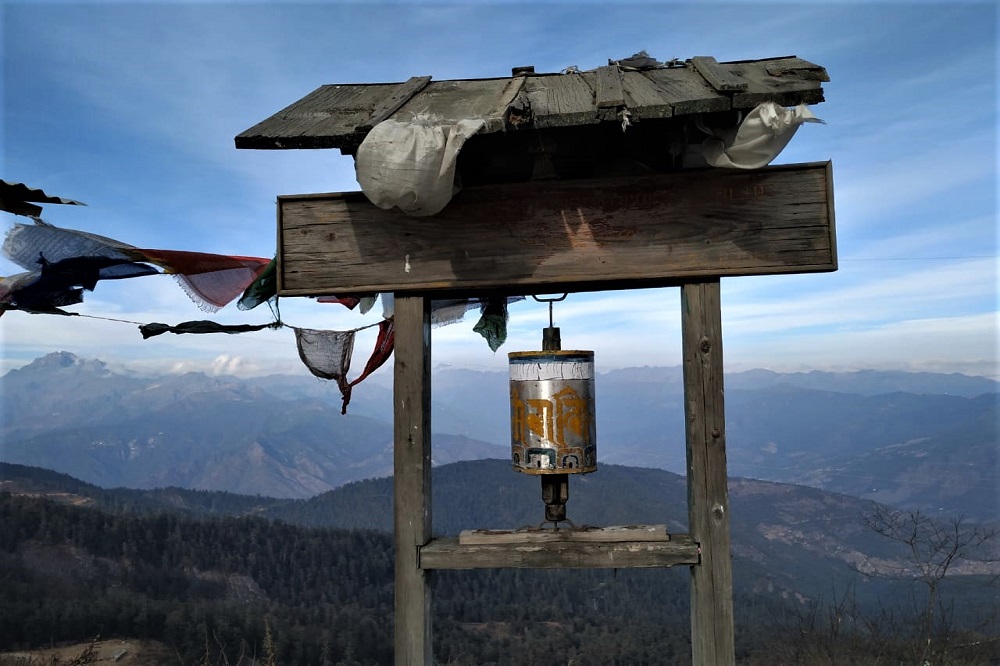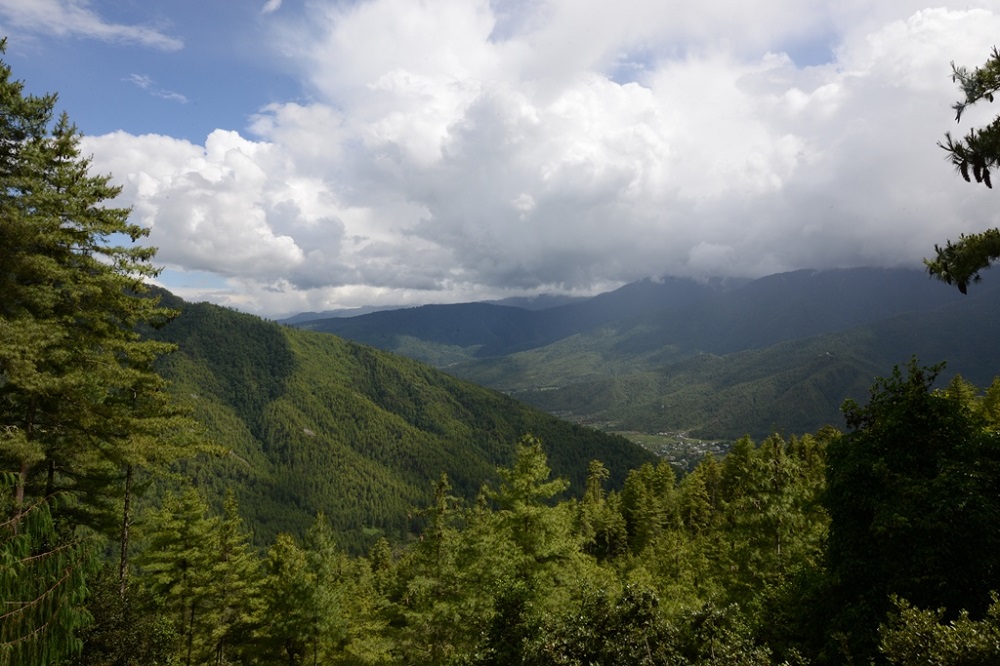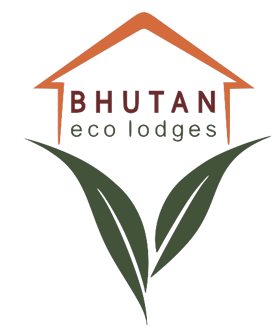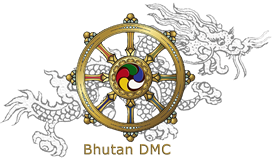Bhutan – Bumthang Owl Trek
An easy trek through the Himalayan forests & charming villages in central Bhutan greeted by night-time howling of Owls
Duration: 2 nights 3 days camping trek & 10 nights 11 days cultural tour with hotel stay
Recommended Seasons: The best months for this trek are March to June and September to November. In addition to this, even December, January, February is good with warm and bright sunny days and clear blue sky though it gets cold at night
Trek Grade: Easy
Bumthang Owl Trek is an interesting short and easy 3-days’ trek offering panoramic vistas, encompassing cultural & natural landscape of enchanting Bumthang valley. Starting from Menchugang, north of Jakar and ending at Tharpaling monastery above Chumey valley, the trek showcases abundance of flora & fauna and mesmerising view of the valleys. The trek route also offers opportunity to experience village life in Dhur, the virgin temperate forests of blue pine, hemlock, fir, spruce, juniper with under growth of bamboo species, rhododendrons, birch, maple, chestnut and snow-capped mountains in the north. During spring season, when the rhododendrons are in full bloom, the route becomes even more beautiful. Different bird species can also be sighted along the route including big monal pheasants, around the Tharpaling area. Some of the highly venerated pilgrimage sites for Bhutanese such as Tharpaling, Choedak and Zhambala can also be seen along the trek trail. Howling of owl is quite common at night on this trek which derives its name as Owl trek.
Itinerary for Bumthang Owl Trek
Day 1: Arrive Paro (Bhutan) by Flight & transfer to Thimphu (55km, approx. 1.1/2-hour drive)
The flight to Paro is one of the most spectacular in entire Himalayas. Flying along the Himalayan range from Kathmandu or over Himalayan foothills if flying from Kolkatta, the journey offers fascinating views and an exciting descent into the Kingdom. Bhutan’s first gift to you as you disembark from the aircraft will be cool, clean fresh mountain air.
After immigration formalities and baggage collection you will be welcomed by our representative and embark on a picturesque drive to Thimphu, the capital town of Bhutan. The road leads through the Paro valley to the confluence of Paro and Thimphu rivers at Chuzom (confluence).
Shortly before reaching Chuzom, you will see on your left Tamchog Lhakhang, the temple built by Thangtong Gyalpo, a pioneering engineer who introduced the construction of suspension bridges into Bhutan and Tibet (several of which are still in use today). The present bridge to Tamchog Lhakhang was restored in 2005 in the design of a traditional style with iron chains and crossing this iron bridge is a wonderful experience.
On arrival, in Thimphu check-into the hotel. The capital town of Bhutan and the centre of government, religion and commerce, Thimphu is a unique city with unusual mixture of modern development alongside ancient traditions. It is perhaps still the world’s only capital city without a traffic light.
Later in afternoon walk around National Memorial Chorten, a large white structure crowned with a golden spire. It is located close to the center of Thimphu city and is one of its most iconic monuments. This is the most ideal spot to interact with locals who throng in large numbers to circumambulate the chorten, whirl the large red prayer wheels and pray at a small shrine inside the gate. The paintings and statues inside the monument provide a deep insight into Buddhist philosophy.
Afterwards an exploratory walk around Thimphu main street and market area.
Overnight at the hotel in Thimphu (Altitude 2,320m)
Day 2: Thimphu
Morning after breakfast, drive to see the iconic gigantic Buddha Dordenma (Vajra seated), the world’s largest sitting bronze statue. Majestically situated at Kuenselphodrang, it is an object of great veneration to all sentient beings. The land at Kuenselphodrang measuring 145 acres was gifted to Monks Body by His Majesty the Fourth King of Bhutan. The Park conserves 798.4 acres of forest area that surrounds the Buddha Dordenma statue. Dedicating it to the 60th birth anniversary celebration of His Majesty the Fourth Druk Gyalpo, His Holiness the Je Khenpo consecrated the 201 feet tall Buddha Dordenma statue at the Kuenselphodrang on 24th September 2015.
After this insightful visit drive to Textile Museum, established in 2001 under the royal patronage of Her Majesty Gyalyum Sangay Choden Wangchuck. The museum is managed by the Department of Culture, Ministry of Home & Cultural Affairs, Royal Government of Bhutan. Exhibitions here introduce the major weaving techniques, styles of local dress and textiles made by women and men.
Institute for Zorig Chusum, commonly known as Arts & Crafts School or Painting School is an important learning center that offers a six-year course on the 13 traditional arts and crafts of Bhutan. On a visit, one can see students learning the various skills taught at the school.
Located below the main town, Centenary Farmers Market popularly known as Weekend market is a pleasant, colourful & delightful place to mingle with locals. Farmers come from all over the country to sell their farm products in this market. Also available here are the handicrafts and artifacts, to purchase.
Then visit Changangkha Lhakhang, one of the ancient temples in Thimphu established on a site chosen by Phajo Drukgom Shigpo, the founder of Drukpa lineage in Bhutan. The central statue here is Chenrezig in a manifestation with 11 heads. From temple courtyard, there is fascinating view of Thimphu valley.
Conclude the sightseeing of the day with visit of Trashichhoedzong that has been the seat of the government since 1952 and presently houses the throne room and offices of His Majesty the King, the Secretariat and the Ministries of Home affairs and Finance. The dzong is located close to Thimphu town, next to the banks of the Wang Chhu River. It is an impressively large structure, surrounded by well-kept lawns and beautiful gardens.
Evening free to explore the government-run Handicrafts Emporium and local crafts Bazaar, to browse through example of Bhutan's fine traditional arts constituting hand-woven textiles, thangkha paintings, masks, ceramics, slate and wood carvings, jewellery, interesting items made from local materials.
Overnight at the hotel in Thimphu (Altitude 2,320m)
Day 3: Thimphu – Gangtey (150km, approx. 5-hour drive)
After breakfast drive up to Dochu-la pass (3,088m/ 10,130 ft) stopping briefly here to take in the view and admire the chorten, mani wall, and prayer flags which decorate the highest point on the road. If skies are clear, the following peaks can be seen from this pass (left to right): Masagang (7,158m), Tsendagang (6,960m), Terigang (7,060m), Jejegangphugang (7,158 m), Kangphugang (7,170 m), Zongphugang (7, 060 m), a table mountain that dominates the isolated region of Lunana - finally Gangkar puensum, the highest peak in Bhutan at 7,570m.
At Dochula Pass, 108 chortens or stupas known as Druk Wangyal Chortens have been built by Ashi Dorji Wangmo Wangchuk, the eldest Queen Mother. These chortens are built in three layers, the first lowest level layer has forty-five chortens, the second has thirty-six and the top layer has twenty-seven, built around the main chorten.
Then drive onto Gangtey. The valley of Gangtey is one of the most beautiful and unspoiled places in Bhutan. The surprise of finding such a wide, flat valley without any trees after the hard climb through dense forests is augmented by an impression of vast space and is an extremely rare experience in Bhutan where most of the valleys are tightly enclosed. A few kilometers beyond the Gangtey Monastery, on the valley floor lies the village of Phobjikha.
On arrival, check into the hotel.
Afternoon visit Gangtey Goenpa, an important monastery of Nyingmapa school of Buddhism, the main seat of the Pema Lingpa tradition. Situated on a prominent hilltop this venerated monastery was founded in 1613 by Je Kuenga Gyaltshen and houses a school, meditation centre and quarter for monks.
Later have a wander in and around quaint Gangtey village.
Overnight at the hotel in Gangtey (Altitude 3,000m)
Day 4: Gangtey – Bumthang (153km, approx. 6-hour drive)
Morning after the breakfast, explore idyllic bowl-shaped glacial Phobjikha valley lying on the western slopes of the Black Mountains and bordering Jigme Singye Wangchuck National Park. Because of the large flock of black-necked cranes that winters here, it is one of the most important wildlife reserves in the country. The valley boasts two beautiful meandering rivers, Nakay Chhu & Gay Chhu and according to local legend, the two rivers actually represent a snake and a boar, with an interesting legend.
To know more about legendary cranes, visit the Black Necked Crane Centre overlooking the picturesque wetland. This vantage location of the centre allows visitor to relax and spot Black-Necked cranes and other bird species in the valley. The center’s observatory is also equipped with bird watching telescopes and binoculars.
Later on, drive to Bumthang via Trongsa crossing Pelela pass (3,300 m), the traditional boundary between east and west. The pass is marked by colourful prayer flags while the ground here is covered with high altitude dwarf bamboo. Stop en route at Chendbji Chorten, the stupa built in 18th century by a Lama named Shida. It is Nepalese in style with eyes painted at four cardinal points.
After lunch stop in Trongsa, continue on to Bumthang across Yutong-la pass (3,400m/ 11,155 ft). The road winds steeply up to the pass from Trongsa, then runs down through coniferous forest into a wide, open cultivated valley known as the Chumey valley.
Take a short stop at Chumey, a wide fertile valley where wheat, barley, potatoes and buckwheat are cultivated. Chumey is particularly known for its famous wool weaving called ‘Bumthang Yathra’.
Overnight at the hotel in Bumthang. (Altitude 2,600m)
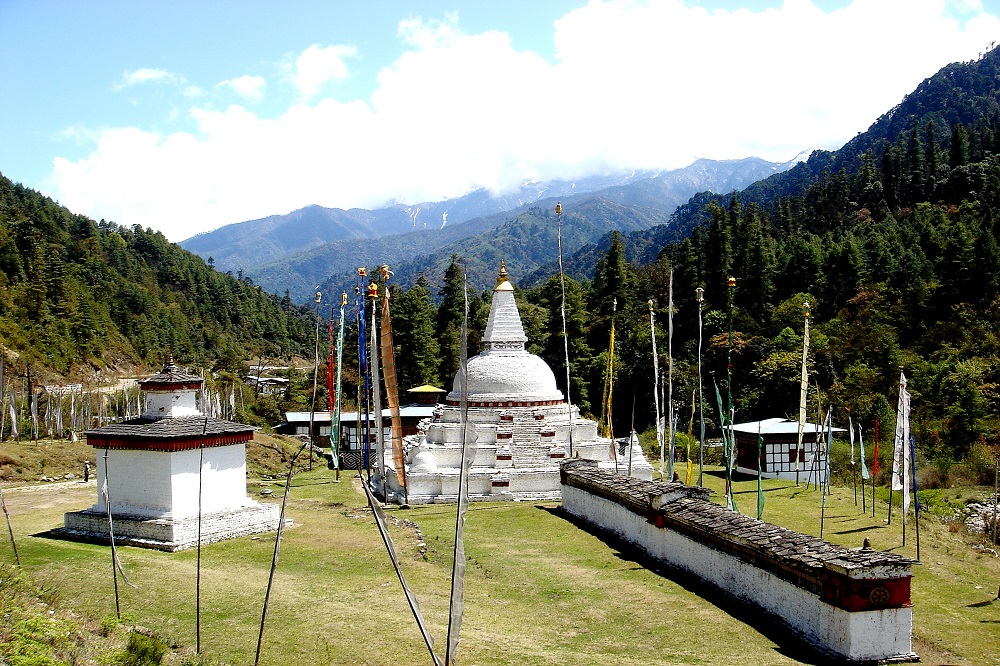
Day 5: Bumthang
Bumthang comprising of four valleys namely, Tang, Ura, Chumey & Choekhor, is one of the most richly endowed districts in Bhutan, in terms of historical and cultural legacy. Choekhor valley is the largest amongst all and widely considered as ‘Bumthang valley’. The valleys are broad and gentle carved by the ancient glaciers, housing most venerated temples and monasteries in the country. The fertile valleys of Bumthang are covered with fields of buckwheat, rice and potatoes, apple orchards and dairy farms.
The sightseeing of the day starts with Jambey Lhakhang, the ancient temple built by Tibetan King Songtsen Gampo in 659 A.D. as part of a chain of 108 simultaneously constructed temples in order to subdue an evil demoness that lay over the Himalayan region.
Short distance from Jambey Lhakhang is the site of sacred Kurje Lhakhang comprising of three temples which are surrounded by 108 chorten walls. The first and the oldest structure of the three, was constructed on the rock where Guru Rinpoche meditated. The second building is also called the Sampa lhundrup temple and houses a colossal statue of Guru Rinpoche. The third building is known as Ka Gon Phur sum lhakhang dedicated to the happiness of all living beings in the kingdom.
Then visit picturesquely located Jakar Dzong, overlooking Choekhor valley. According to legend, when the lamas assembled in about 1549 to select a site for a monastery, a big white bird rose suddenly in the air and settled on a spur of a hill. This was interpreted as an important omen, and the hill was chosen as the monastery's site and for Jakar Dzong, which translates as 'castle of the white bird'.
Post lunch, a special visit to Tamshing Lhakhang, a major Nyingma monastery founded in Pema Lingpa in 1501. It is particularly famous for its collection of paintings which exemplify the region’s style while its mother monastery is Lhalung in central Tibet. The monastery is one of the few institutions continuing the teaching of Pema Lingpa.
Then go for an interesting visit to Bumthang Brewery. This state-of the-art microbrewery produces Swiss-style unfiltered Weiss beer locally famous as ‘Red Panda Beer’. When launched, this was first of its kind Brewery in Bhutan, producing draught beer, apple cider, wine, apple brandy. At the Brewery, one can see the entire process of making unfiltered Weiss beer while at adjacent Swiss Farm get an insight into the cheese-making process, also taste Red Panda Beer and procure cheese, apple brandy, clover honey etc.
Evening at leisure for independent activities, exploring local market, learning the art of traditional Bhutanese cuisine or an interactive session with Buddhist monk.
Overnight at the hotel in Bumthang. (Altitude 2,600m)
Day 6: Bumthang – Menchugang – Dhur – Schonath (7 km, approx. 3-hour trek & visit 2 – 3 hour)
Morning after breakfast, transfer to trail head at Menchugang. On the way, visit Dhur (2900m) – biggest village in Bumthang, consisting of about 75 households with diverse populations, based on their local dialects. The view above the village is mesmerising including the view of far-off mountains. Water driven flourmill is one of the highlights on this trail. Continue trek uphill through blue pine forest and reach the campsite at Schonath (3,450 m) amidst hemlock and juniper forest. Howling of owl is quite common at night which also derives the name of this trek.
Overnight Camp at 3,450m.
Day 7: Schonath – Kitiphu (6km, approx. 2.1/2-hour trek)
Today trek through verdant and virgin forest of spruce, hemlock, fir, birch and rhododendron. After couple of hours’ trek, one reaches at Drangela pass (3,600 m). Descend the pass and climb Kitiphu ridge campsite (3870 m). Climb further uphill for 30 -40 min at Kitiphu ridge summit for panoramic view of valley and mountain peaks - mainly Gangkar Puensum (7570 m) - highest mountain of Bhutan.
Overnight camp at 3,870m.
Day 8: End of Trek & drive to Trongsa (60km, approx. 2-hour drive)
Its downhill trek all the way of about 4km, taking about 2 hours. On the way, visit the monasteries of Zambhalha, Chuedak and Tharpaling. Later meet the vehicle and drive to Chumey valley (30-minute downhill) and then onwards to Trongsa.
Afternoon visit majestic Trongsa Dzong, built in 1644. It used to be the seat of power of the Wangchuck dynasty before they became rulers of Bhutan in 1907. Traditionally, the King of Bhutan first becomes the Trongsa Penlop (governor) before being named the Crown Prince and eventually the King. Built on a mountain spur high above the gorges of the Mangde Chhu, the dzong controlled east-west trade for centuries.
Evening at leisure in heart of Trongsa town, meeting & interacting with locals.
Overnight at the hotel in Trongsa. (Altitude 2,310m)
Day 9: Trongsa – Punakha (145km, approx. 4.1/2-hour drive)
Morning after breakfast visit Ta Dzong, an ancient watchtower converted into a museum which is now dedicated to the Wangchuck dynasty and is an interesting place to learn about the history of the Kingdom. Then drive onwards to Punakha. The district of Punakha has been inextricably linked with momentous occasions in Bhutanese history. It served as the capital of the country from 1637 to 1907 and the first national assembly was hosted here in 1953. The valley of Punakha has a pleasant climate with warm winters and hot summers.
Later in the afternoon at Punakha, take an excursion to Chimi Lhakhang, located on a hillock near Sopsokha village, about 20-minute walk from the road point along the agricultural fields of mustard and rice. Prayer flags are lined all along the road from the tiny village hamlet known as Yowakha, along a stream to the monastery. Also known as Fertility Temple, this famous Lhakhang is dedicated to Lama Drukpa Kuenley, the 15th century Tibetan saint who is popularly known as ‘Divine Madman’ owing to his strange way of teaching. It is widely believed that childless couple who visit the temple are blessed with a baby hence it is also called Fertility temple.
Overnight at the hotel in Punakha. (Altitude 1,300m)
Day 10: Punakha
After early breakfast, visit Punakha Dzong the second oldest, the second largest and one of the most majestic fortresses in the country, built at the confluence of Pho Chhu and Mo Chhu rivers. The Dzong is 180m long and 72m wide while the Utse (central tower) is six storeys high. Frequent fires (the latest in 1986) had damaged the dzong, as did the severe 1897 earthquake. In 1994 a glacial lake burst on the Pho Chhu, causing damage to the dzong but overcoming all the challenges it has been fully restored in its original splendour. Access to the dzong is across the Bazam bridge, which was rebuilt in 2008 after the original 17th-century bridge was washed away in floods in 1958.
Afterwards embark on a walking excursion to Khamsum Yulley Namgyal Chorten, a beautiful stupa overlooking the Punakha valley and built with a specific purpose of warding off evil spirits in the valley and to bring peace and harmony to entire world. Despite its relatively recent construction in 2004, it is built in accordance with traditional teachings. It took Bhutanese carpenters, painters, artists and sculptors about nine years to build this four-story stupa as well as other smaller stupas surrounding it.
Afternoon driving excursion to Talo village & Nobgang village, the home of the Queen mothers of Bhutan. Visit a traditional farmhouse in the village and enjoy a tea with local family, explore their vegetable & flower garden and learn about their culture, traditions & way of life.
While returning to the hotel, on the way visit Sangchhen Dorji Lhuendrup Lhakhang, a nunnery perched on a ridge overlooking Punakha & Wangduephodrang valleys. The lhakhang comprises a double storied temple, a chorten resembling Nepal’s Boudhanath stupa and a nunnery complex.
Overnight at the hotel in Punakha. (Altitude 1,300m)
Day 11: Punakha – Paro (125km, approx. 4-hour drive)
After breakfast, drive to Paro along scenic highway. En route visit Simtokha Dzong, one the oldest fortress of the country built in 1629. The name Semtokha literally means ‘Atop a Demon’ and the legend associated with the dzong’s construction tells us that it was built in order to subdue an evil spirit that was harassing travellers in the region. The dzong was modelled after the Gyal Gyad Tshel Institute of Ralung (Tibet) and is quite distinctive as its Utse or central tower has 12 sides.
On arrival in Paro, check into the hotel.
Post lunch, proceed to visit Ta Dzong, originally built as Watchtower, which now houses National Museum. The extensive collection includes antique thangkha paintings, textiles, weapons & armour, household objects and a rich assortment of natural and historic artifacts.
Ta Dzong visit immediately followed by a short walk down the trail to visit Rinpung Dzong (Paro Dzong), meaning (‘fortress of the heap of jewels’), which has a long and fascinating history. Along the wooden galleries lining the inner courtyard are fine wall paintings illustrating Buddhist lore such as four friends, the old man of long life, the wheel of life, scenes from the life of Milarepa, Mount. Sumeru and cosmic Mandala.
Evening explore Paro city centre and market area.
Overnight at the hotel in Paro. (Altitude 2,280m)
Day 12: Paro
After breakfast, embark on a fascinating excursion to Taktshang Monastery or Tiger’s Nest (approx. 5 hours’ round trip walk). It is one of the most famous of Bhutan’s monasteries, perched on the side of a cliff 900m above the Paro valley floor. Legends say that Guru Rinpoche arrived here on the back of a tigress and meditated at this monastery and hence it is called ‘Tiger’s Nest’. This site has been recognized as a most sacred place and visited by Zhabdrung Ngawang Namgyal in 1646 and now visited by all Bhutanese at least once in their lifetime.
While driving to Paro town, stop en route at the 7th century Kyichu Lhakhang, one of the 108 temples built in the Himalayas by Tibetan King, Songtsen Gampo. The building of this temple marks the introduction of Buddhism in Bhutan.
Evening at leisure in Paro city centre.
Overnight at the hotel in Paro. (Altitude 2,280m)
Day 13: Depart Paro by Flight
After breakfast at the hotel, drive to the airport for the flight to your onward destination.
HOTELS IN THIMPHU
HOTELS IN PUNAKHA & WANGDUE
HOTELS IN GANGTEY
HOTELS IN TRONGSA
HOTELS IN BUMTHANG
HOTELS IN MONGAR
HOTELS IN TRASHIGANG
HOTELS IN SAMDRUP JONGKHAR
HOTELS IN PHUENTSHOLING
HOTELS IN HAA
HOTELS IN GELEPHU
HOTELS IN ZHEMGANG
RESTAURANTS IN PARO
RESTAURANTS IN THIMPHU
RESTAURANTS IN PUNAKHA
TOUR ITINERARIES
TREKKING ITINERARIES
SPECIAL INTERESTS TOURS
UNIQUE FESTIVALS & FAIRS
BLOG
